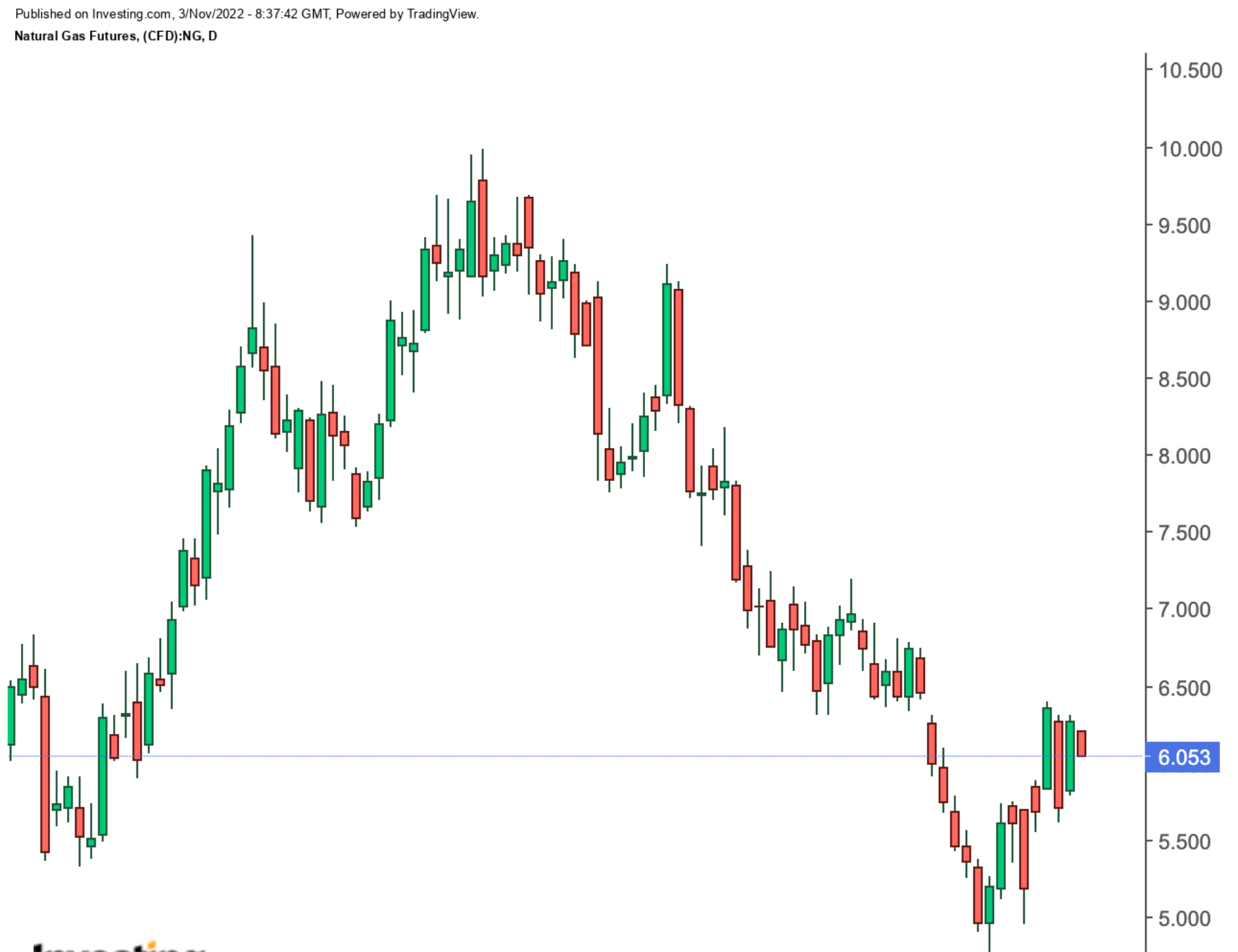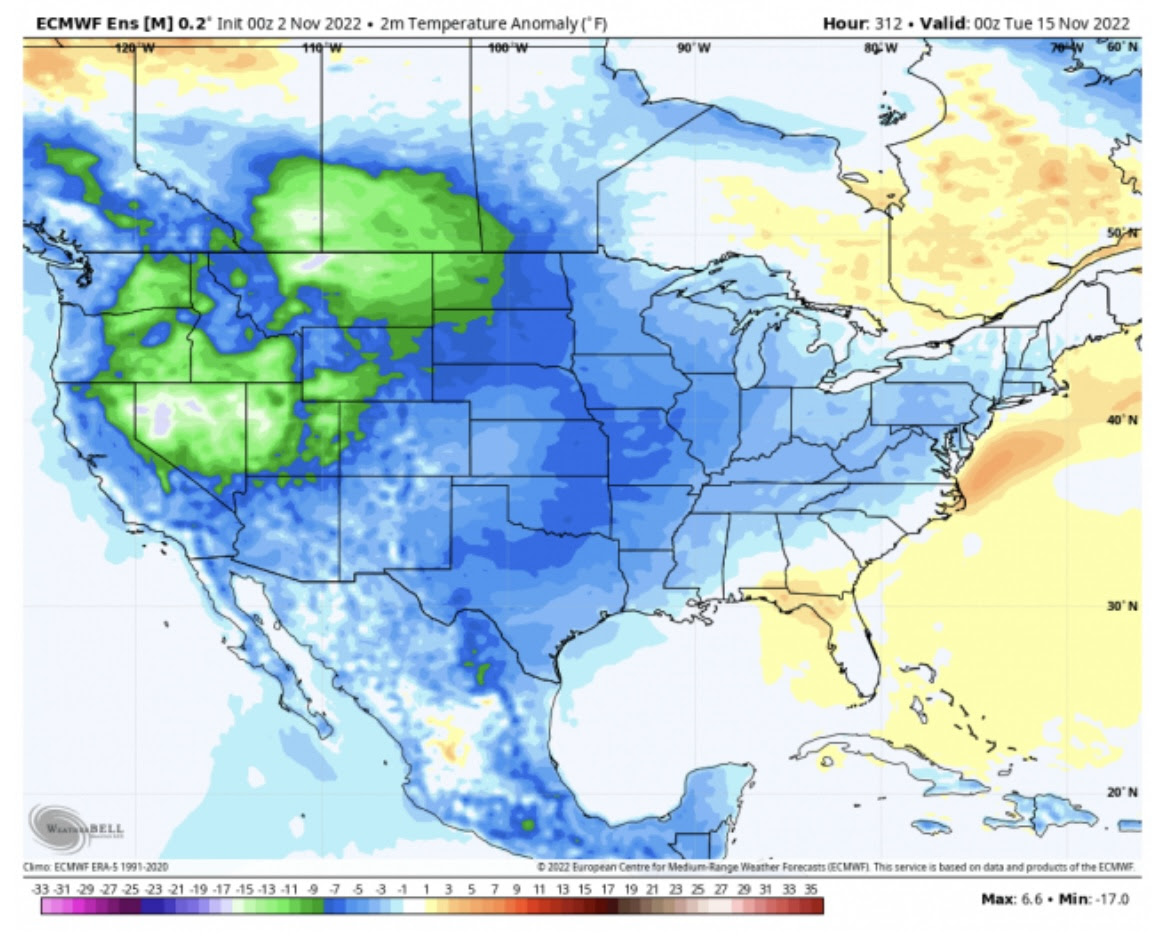- Four straight days of double-digit gyrations on Henry Hub’s front month
- All eyes on Freeport LNG’s planned reopen
- US and Europe’s weather models giving muddle outlooks
Giddy-up! The bucking bronco of energy is here—but mount only if you have the stomach for it.
Natural gas' reputation for price swings is well-known. However, four straight days of double-digit gyrations on Henry Hub’s front month might leave even the most seasoned gas market gaucho a little woozy.
Ramped up price volatility is likely to be an ongoing feature in the gas futures trade on the New York Mercantile Exchange as a tug-of-war erupts between bullish and bearish drivers.
After rallying nearly 12% Monday into the mid-$6.30s for each milliliter of a British thermal unit (mmBtu), Henry Hub’s December front-month contract on NYMEX reversed course completely the next day, shedding 64.1 cents to settle at $5.714/MMBtu.
By Wednesday, the market was going the other way again, hovering near the $6-teens/MMBtu as the overnight runs of the major weather forecast models locked on to the possible arrival of widespread below-average temperatures around mid-November.
Part of Tuesday’s price downside activity stemmed from sluggish export demand for liquefied natural gas (LNG). In fact, feedgas demand declined to slightly over 11 billion cubic feet per day (bcf/d) early Tuesday, after pipeline flows to Sabine Pass embarked on a four-day maintenance that reduced volumes at that terminal to a capacity of 78%.
Another situation that injected some bearishness into the market surrounded the looming return of the Freeport LNG export terminal, which is supposed to add at least another 2 bcf/d of feedgas demand to the market.
This additional feedgas was thought to begin ramping up at the start of November and continue to rise to full capacity by the end of the month. However, as of Nov. 1, the facility had not released any information on an official restart plan with the Pipeline & Hazardous Materials Safety Administration, which implies there may not be a restart of the facility until later in the month.
This was construed as bearish news for NYMEX gas futures prices while the reopening of the Freeport terminal was slated to bring daily feedgas demand back to record highs by the end of November.
Fluctuations in the major weather forecast models also influenced Tuesday’s selling on NYMEX gas. This was particularly the case for the Global Forecast System (GFS) model, which suggested there might be a moderation in the temperature outlook to more seasonally normal conditions across the United States.
However, the GFS has been erratically flipping around on its temperature forecasts lately, so it’s been challenging to gauge how the cold air situation might play out with that specific model.
The European ECMWF model has been more cautious and consistent in its respective outlook and has leaned toward a colder scenario.

Source: Gelber & Associates
As of Tuesday night, the ECMWF model runs showed the temperature profile of almost the entire nation in shades of green and blue that could send gas demand spiking higher should the mid-November cold outbreak come to fruition. This outlook helped trigger the spike in NYMEX’s front-month gas futures on Wednesday.
Alan Lammey, analyst at Houston-based gas markets consultancy Gelber & Associates, said he expected “considerable price volatility to be a common theme for the foreseeable future,” adding:
“The weather forecast models, chiefly the GFS, will probably continue to flip on their respective temperature outlooks, causing knee-jerk reactions in gas futures prices”.
“It’s not out of the question that prices could return to the $6.40s/MMBtu if the cold weather outlook verifies. Sentiment will be even more bullish if the Freeport LNG facility manages to restart operations quickly.”
Conversely, if the GFS and ECMWF weather forecast models happen to backpedal on their respective mid-November cold weather outbreak outlooks and if the Freeport LNG terminal turns out to postpone the restart of the facility to late November or December, it could set the stage for a deeper NYMEX sell-off to the $5.20s/MMBtu area or lower.
SKCharting.com’s chief technical strategist Sunil Kumar Dixit had a similar outlook.
“Momentum indicators look hesitant about any rebound and thus the extent of upside may be limited,” Dixit said.
He said a double bottom on the weekly chart as seen at $5.31 and $5.35 may provide a lift towards $6.77, followed by $7.32
However, if prices break down below $5.30, with supporting volume, a quick retest of $5.15 and $5.0 could be expected.
“Mid term outlook calls for more pains for bulls in the event of a sustained break below the psychological $5.0 handle, and bears will be keen on their area of interest at $4.30 and $3.80 over an extended period of time.”
Dixit added that as long as the $5.35 and $5.88 held, “gas bulls can have a good time.”
Analysts at The Schork Report said in a blog carried by naturalgasintel.com that this week’s price roller-coaster showed the market eagerly “awaits this season’s first blast of frigid air.”
EBW AnalyticsGroup’s senior analyst Eli Rubin said that the latest projected colder weather in mid-November could add 15 bcf/d to gas demand. Citing DTN’s forecasts, he also noted that a Madden–Julian Oscillation transition may bring cold air masses east by Thanksgiving.
“If the gas market can survive extreme near-term bearishness, fundamental support is likely to arrive later this month,” he said.
Rubin also noted that more volatility may lie ahead, amid expectations that the Energy Information Administration (EIA) will report a stout storage build for gas for the week ended Oct. 28.
A Reuters poll ahead of the EIA report showed US utilities likely added a bigger-than-usual 97 bcf to storage last week as mild weather lowered heating demand for the fuel.
The forecast injection for the week ending Oct. 28 compared with a build of 66 bcf during the same week a year ago and a five-year (2017-2021) average increase of 45 bcf.
In the week ended Oct. 21, utilities added 52 bcf of gas to storage.
If correct, the forecast for the week ended Oct. 28 would lift stockpiles to 3.491 trillion cubic feet (tcf), about 3.1% below the same week a year ago and 4.0% below the five-year average.
The weather was not as cold as usual last week. There were around 56 heating degree days (HDDs) last week, lower than the 30-year normal of 72 HDDs for the period, according to data provider Refinitiv.
HDDs, which are used to estimate demand to heat homes and businesses, measure the number of degrees a day's average temperature is below 65 Fahrenheit (18 Celsius).
Disclaimer: Barani Krishnan uses a range of views outside his own to bring diversity to his analysis of any market. For neutrality, he sometimes presents contrarian views and market variables. He does not hold positions in the commodities and securities he writes about.
